Sandy Napel
The Medical Segmentation Decathlon
Jun 10, 2021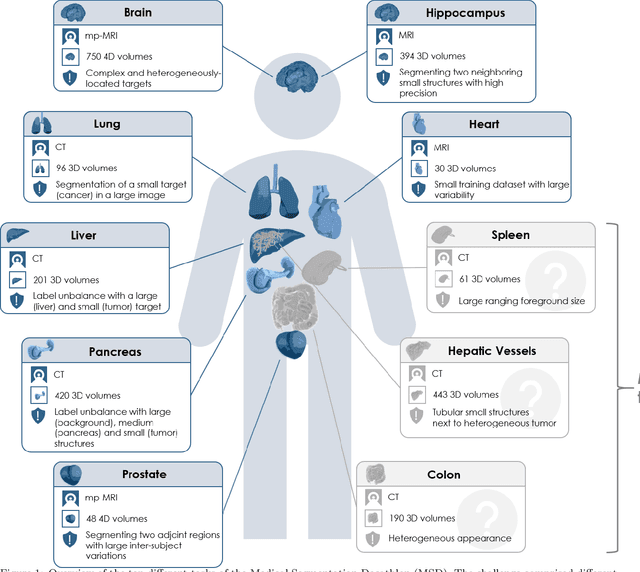
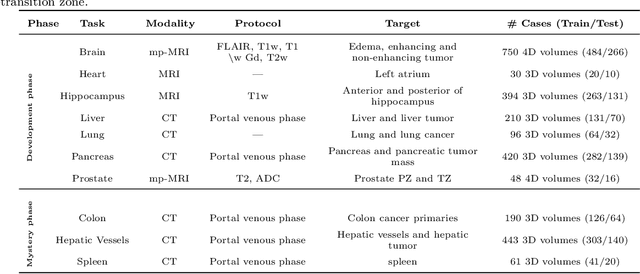
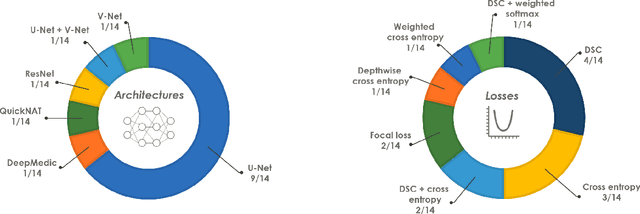
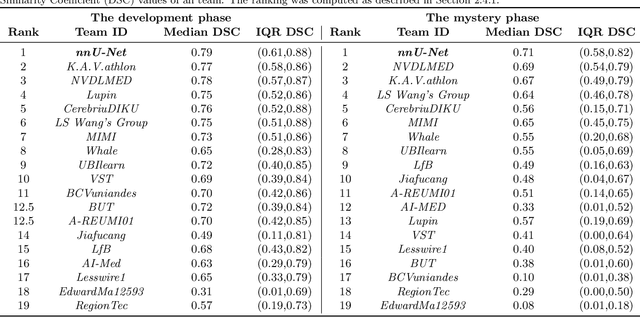
Abstract:International challenges have become the de facto standard for comparative assessment of image analysis algorithms given a specific task. Segmentation is so far the most widely investigated medical image processing task, but the various segmentation challenges have typically been organized in isolation, such that algorithm development was driven by the need to tackle a single specific clinical problem. We hypothesized that a method capable of performing well on multiple tasks will generalize well to a previously unseen task and potentially outperform a custom-designed solution. To investigate the hypothesis, we organized the Medical Segmentation Decathlon (MSD) - a biomedical image analysis challenge, in which algorithms compete in a multitude of both tasks and modalities. The underlying data set was designed to explore the axis of difficulties typically encountered when dealing with medical images, such as small data sets, unbalanced labels, multi-site data and small objects. The MSD challenge confirmed that algorithms with a consistent good performance on a set of tasks preserved their good average performance on a different set of previously unseen tasks. Moreover, by monitoring the MSD winner for two years, we found that this algorithm continued generalizing well to a wide range of other clinical problems, further confirming our hypothesis. Three main conclusions can be drawn from this study: (1) state-of-the-art image segmentation algorithms are mature, accurate, and generalize well when retrained on unseen tasks; (2) consistent algorithmic performance across multiple tasks is a strong surrogate of algorithmic generalizability; (3) the training of accurate AI segmentation models is now commoditized to non AI experts.
A radiomics approach to analyze cardiac alterations in hypertension
Jul 21, 2020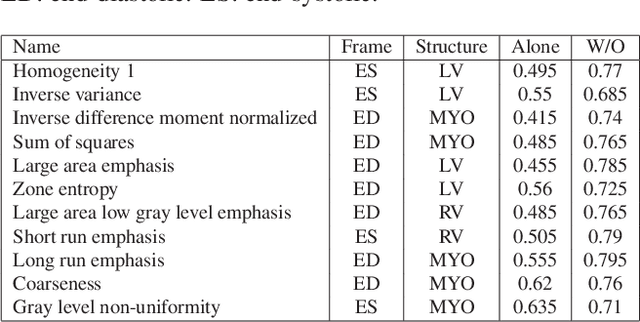
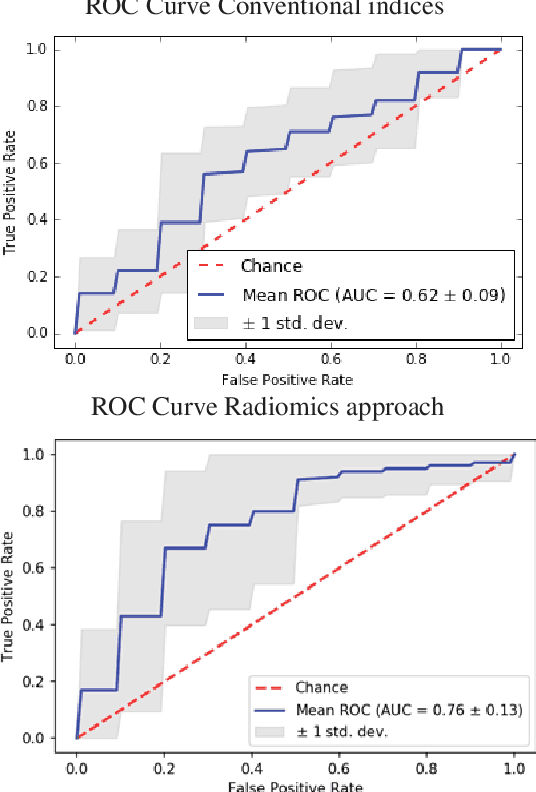
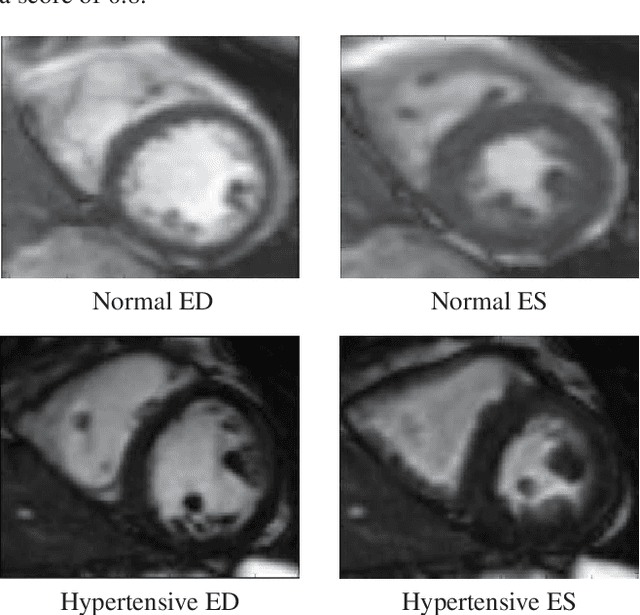
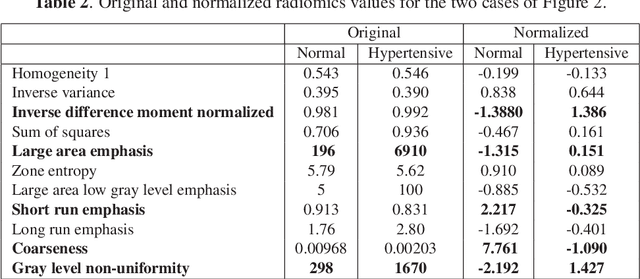
Abstract:Hypertension is a medical condition that is well-established as a risk factor for many major diseases. For example, it can cause alterations in the cardiac structure and function over time that can lead to heart related morbidity and mortality. However, at the subclinical stage, these changes are subtle and cannot be easily captured using conventional cardiovascular indices calculated from clinical cardiac imaging. In this paper, we describe a radiomics approach for identifying intermediate imaging phenotypes associated with hypertension. The method combines feature selection and machine learning techniques to identify the most subtle as well as complex structural and tissue changes in hypertensive subgroups as compared to healthy individuals. Validation based on a sample of asymptomatic hearts that include both hypertensive and non-hypertensive cases demonstrate that the proposed radiomics model is capable of detecting intensity and textural changes well beyond the capabilities of conventional imaging phenotypes, indicating its potential for improved understanding of the longitudinal effects of hypertension on cardiovascular health and disease.
A Mean-Field Theory for Learning the Schönberg Measure of Radial Basis Functions
Jul 03, 2020


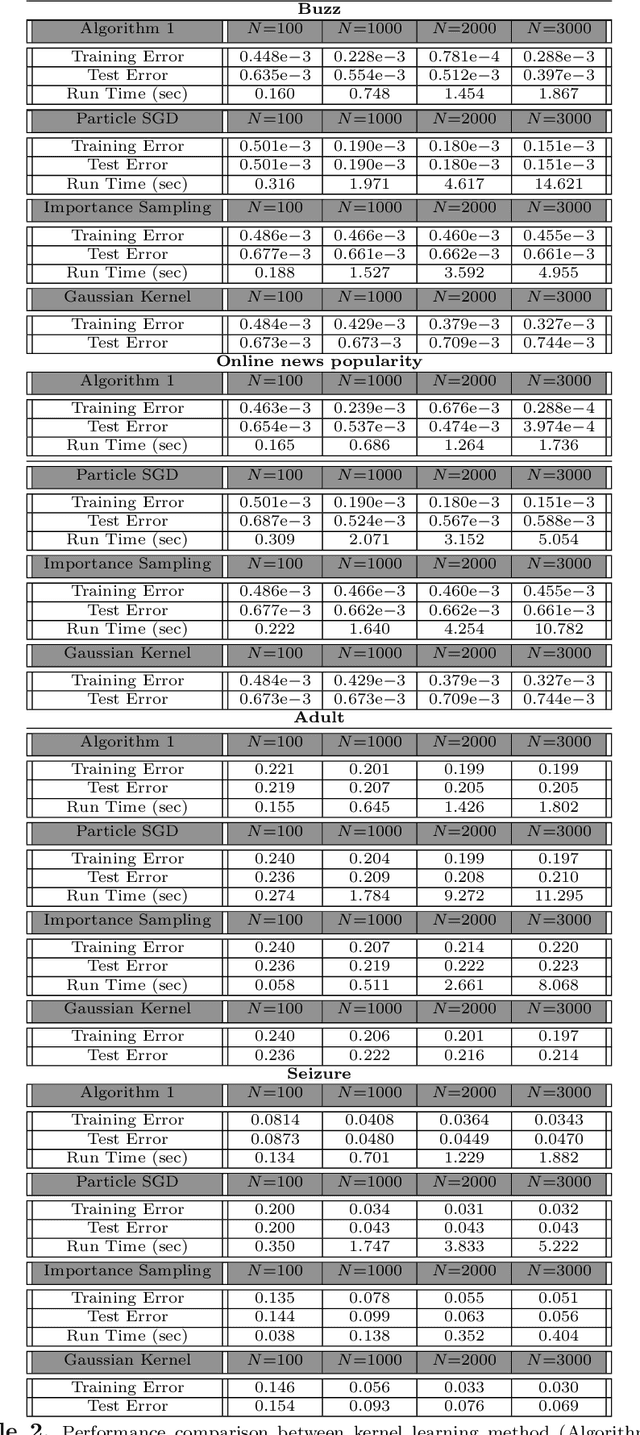
Abstract:We develop and analyze a projected particle Langevin optimization method to learn the distribution in the Sch\"{o}nberg integral representation of the radial basis functions from training samples. More specifically, we characterize a distributionally robust optimization method with respect to the Wasserstein distance to optimize the distribution in the Sch\"{o}nberg integral representation. To provide theoretical performance guarantees, we analyze the scaling limits of a projected particle online (stochastic) optimization method in the mean-field regime. In particular, we prove that in the scaling limits, the empirical measure of the Langevin particles converges to the law of a reflected It\^{o} diffusion-drift process. Moreover, the drift is also a function of the law of the underlying process. Using It\^{o} lemma for semi-martingales and Grisanov's change of measure for the Wiener processes, we then derive a Mckean-Vlasov type partial differential equation (PDE) with Robin boundary conditions that describes the evolution of the empirical measure of the projected Langevin particles in the mean-field regime. In addition, we establish the existence and uniqueness of the steady-state solutions of the derived PDE in the weak sense. We apply our learning approach to train radial kernels in the kernel locally sensitive hash (LSH) functions, where the training data-set is generated via a $k$-mean clustering method on a small subset of data-base. We subsequently apply our kernel LSH with a trained kernel for image retrieval task on MNIST data-set, and demonstrate the efficacy of our kernel learning approach. We also apply our kernel learning approach in conjunction with the kernel support vector machines (SVMs) for classification of benchmark data-sets.
A Radiomics Approach to Computer-Aided Diagnosis with Cardiac Cine-MRI
Sep 25, 2019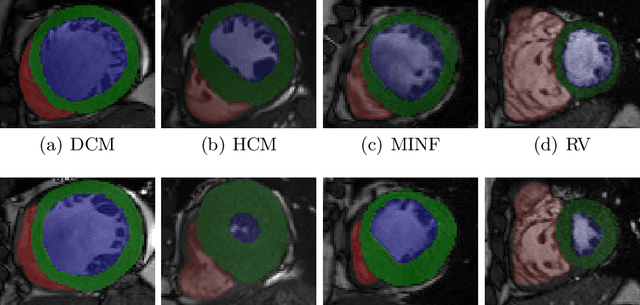

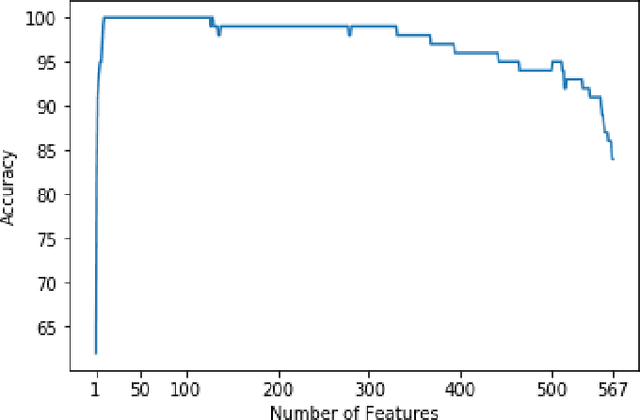
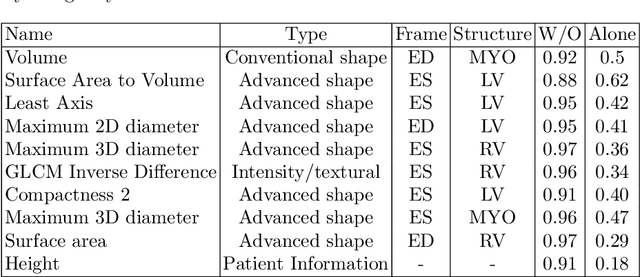
Abstract:Use expert visualization or conventional clinical indices can lack accuracy for borderline classications. Advanced statistical approaches based on eigen-decomposition have been mostly concerned with shape and motion indices. In this paper, we present a new approach to identify CVDs from cine-MRI by estimating large pools of radiomic features (statistical, shape and textural features) encoding relevant changes in anatomical and image characteristics due to CVDs. The calculated cine-MRI radiomic features are assessed using sequential forward feature selection to identify the most relevant ones for given CVD classes (e.g. myocardial infarction, cardiomyopathy, abnormal right ventricle). Finally, advanced machine learning is applied to suitably integrate the selected radiomics for final multi-feature classification based on Support Vector Machines (SVMs). The proposed technique was trained and cross-validated using 100 cine-MRI cases corresponding to five different cardiac classes from the ACDC MICCAI 2017 challenge \footnote{https://www.creatis.insa-lyon.fr/Challenge/acdc/index.html}. All cases were correctly classified in this preliminary study, indicating potential of using large-scale radiomics for MRI-based diagnosis of CVDs.
A large annotated medical image dataset for the development and evaluation of segmentation algorithms
Feb 25, 2019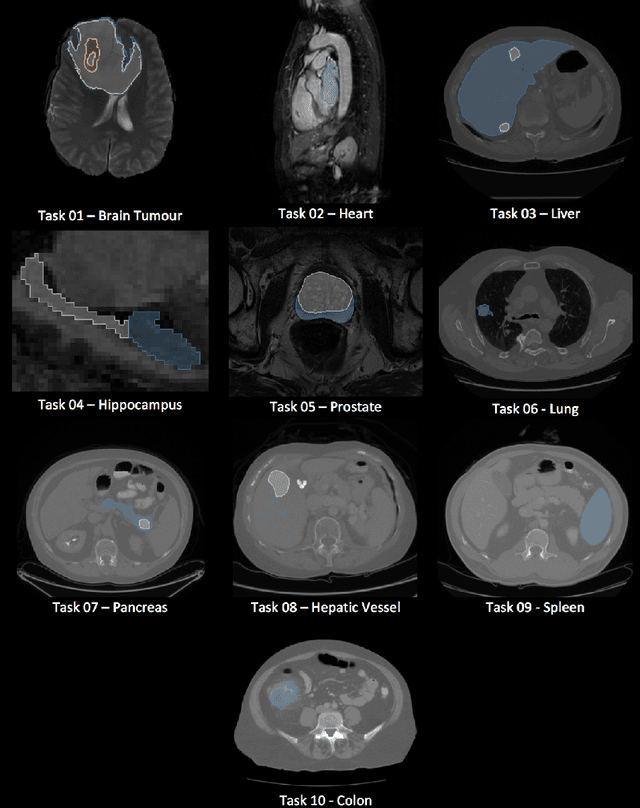
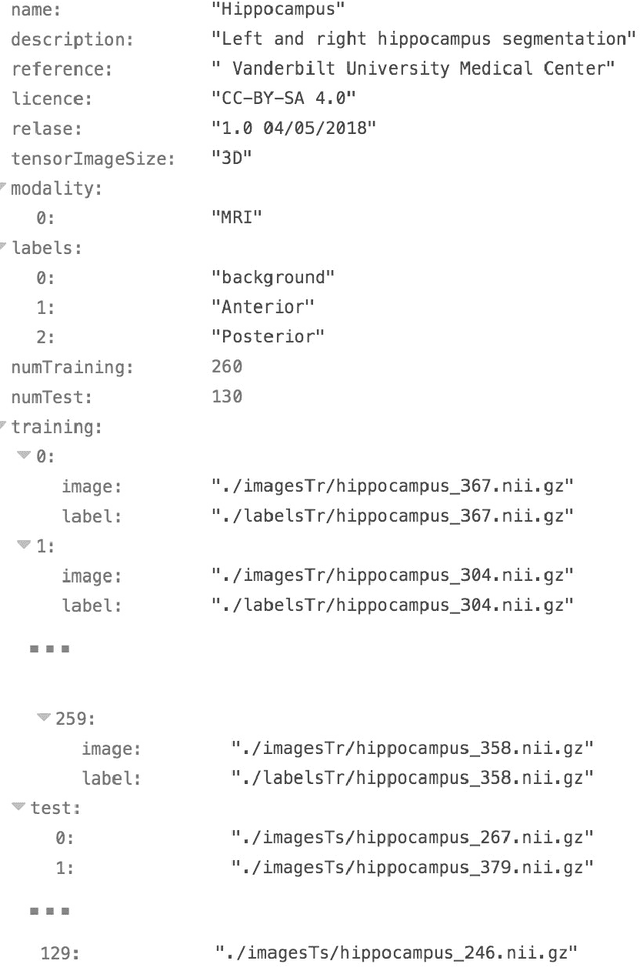
Abstract:Semantic segmentation of medical images aims to associate a pixel with a label in a medical image without human initialization. The success of semantic segmentation algorithms is contingent on the availability of high-quality imaging data with corresponding labels provided by experts. We sought to create a large collection of annotated medical image datasets of various clinically relevant anatomies available under open source license to facilitate the development of semantic segmentation algorithms. Such a resource would allow: 1) objective assessment of general-purpose segmentation methods through comprehensive benchmarking and 2) open and free access to medical image data for any researcher interested in the problem domain. Through a multi-institutional effort, we generated a large, curated dataset representative of several highly variable segmentation tasks that was used in a crowd-sourced challenge - the Medical Segmentation Decathlon held during the 2018 Medical Image Computing and Computer Aided Interventions Conference in Granada, Spain. Here, we describe these ten labeled image datasets so that these data may be effectively reused by the research community.
Adaptive Local Window for Level Set Segmentation of CT and MRI Liver Lesions
Jun 12, 2016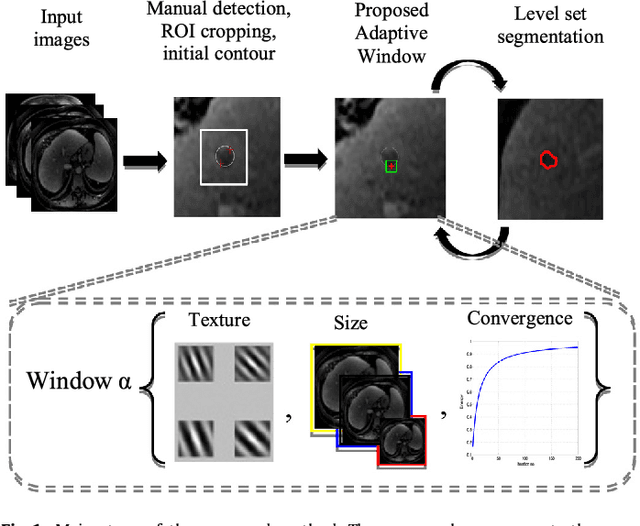

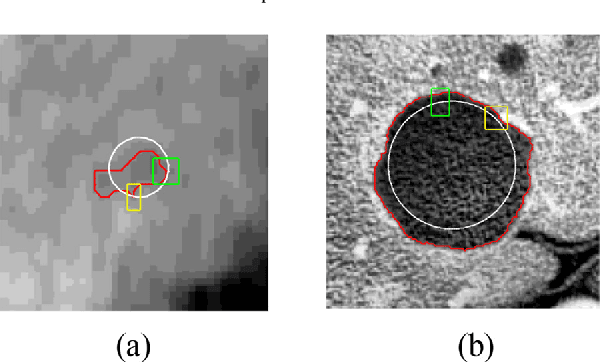
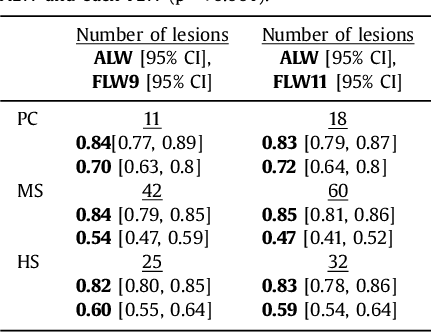
Abstract:We propose a novel method, the adaptive local window, for improving level set segmentation technique. The window is estimated separately for each contour point, over iterations of the segmentation process, and for each individual object. Our method considers the object scale, the spatial texture, and changes of the energy functional over iterations. Global and local statistics are considered by calculating several gray level co-occurrence matrices. We demonstrate the capabilities of the method in the domain of medical imaging for segmenting 233 images with liver lesions. To illustrate the strength of our method, those images were obtained by either Computed Tomography or Magnetic Resonance Imaging. Moreover, we analyzed images using three different energy models. We compare our method to a global level set segmentation and to local framework that uses predefined fixed-size square windows. The results indicate that our proposed method outperforms the other methods in terms of agreement with the manual marking and dependence on contour initialization or the energy model used. In case of complex lesions, such as low contrast lesions, heterogeneous lesions, or lesions with a noisy background, our method shows significantly better segmentation with an improvement of 0.25+- 0.13 in Dice similarity coefficient, compared with state of the art fixed-size local windows (Wilcoxon, p < 0.001).
A Hybrid Method for Distance Metric Learning
Jun 29, 2012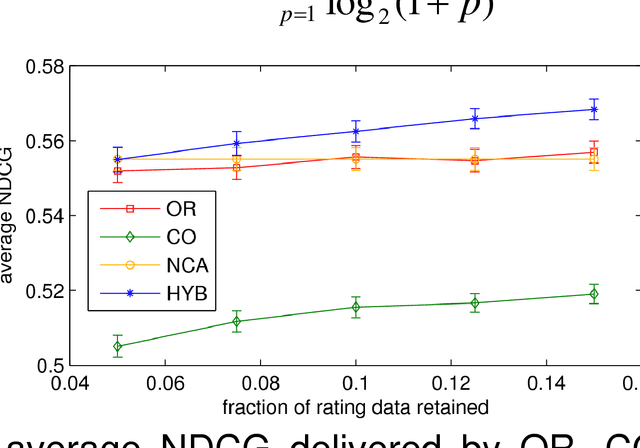
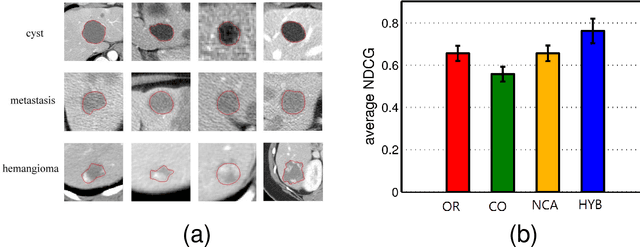
Abstract:We consider the problem of learning a measure of distance among vectors in a feature space and propose a hybrid method that simultaneously learns from similarity ratings assigned to pairs of vectors and class labels assigned to individual vectors. Our method is based on a generative model in which class labels can provide information that is not encoded in feature vectors but yet relates to perceived similarity between objects. Experiments with synthetic data as well as a real medical image retrieval problem demonstrate that leveraging class labels through use of our method improves retrieval performance significantly.
 Add to Chrome
Add to Chrome Add to Firefox
Add to Firefox Add to Edge
Add to Edge